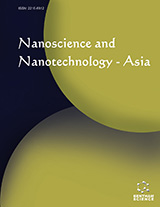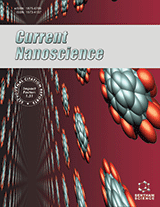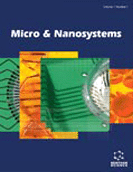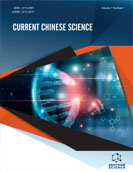Abstract
In this investigation, a cost effective approach has been developed to fabricate photoelectrochemical (PEC) solar cell on cheap steel substrate sensitized with natural dye and performance has been compared with CdS quantum dots (QDs) sensitized PEC cell. The performance of natural dye sensitized PEC cells has been found to be better than QDs senstitized cell and comparable to conventional high cost ITO-FTO based solar cell which makes use of costly synthetic dyes. For the purpose, microwave synthesis of TiO2 and electrophoretic deposition(EPD) of porous, high qualityTiO2 thin films on steel substrate using microwave synthesized nanocrystaline TiO2 has been carried out. The prepared TiO2 thin films were sensitized using natural dyes and QDs of CdS for PEC cell application. Effect of different sensitizers on TiO2 photoanodes was studied using 1M KOH electrolyte in a PEC cell using electrochemical impedance spectroscopy (EIS). Conversion of visible light into electricity has been accomplished using these cells with natural sensitizer providing short circuit current density (Jsc) and open circuit voltage (Voc) values comparable to conventional high cost traditional dyes. The maximum Jsc and Voc are found to be 450.40µAcm−2 and 242.43 mV, respectively, under 10mWcm−2 of illumination for natural dye.
Keywords: Electrophoretic deposition, Electrochemical Impedance Spectroscopy, Natural dye, Photoanode, Photoelectrochemical Cell, Quantum Dots, Steel Substrate, TiO2.
Nanoscience & Nanotechnology-Asia
Title:Microwave Synthesis and Electrophoretic Deposition of TiO2 on Steel Substrate for Natural Dye and CdS Quantum Dots Sensitized Photoelectrochemical Cells
Volume: 4 Issue: 1
Author(s): Ashok K. Singh
Affiliation:
Keywords: Electrophoretic deposition, Electrochemical Impedance Spectroscopy, Natural dye, Photoanode, Photoelectrochemical Cell, Quantum Dots, Steel Substrate, TiO2.
Abstract: In this investigation, a cost effective approach has been developed to fabricate photoelectrochemical (PEC) solar cell on cheap steel substrate sensitized with natural dye and performance has been compared with CdS quantum dots (QDs) sensitized PEC cell. The performance of natural dye sensitized PEC cells has been found to be better than QDs senstitized cell and comparable to conventional high cost ITO-FTO based solar cell which makes use of costly synthetic dyes. For the purpose, microwave synthesis of TiO2 and electrophoretic deposition(EPD) of porous, high qualityTiO2 thin films on steel substrate using microwave synthesized nanocrystaline TiO2 has been carried out. The prepared TiO2 thin films were sensitized using natural dyes and QDs of CdS for PEC cell application. Effect of different sensitizers on TiO2 photoanodes was studied using 1M KOH electrolyte in a PEC cell using electrochemical impedance spectroscopy (EIS). Conversion of visible light into electricity has been accomplished using these cells with natural sensitizer providing short circuit current density (Jsc) and open circuit voltage (Voc) values comparable to conventional high cost traditional dyes. The maximum Jsc and Voc are found to be 450.40µAcm−2 and 242.43 mV, respectively, under 10mWcm−2 of illumination for natural dye.
Export Options
About this article
Cite this article as:
Singh K. Ashok, Microwave Synthesis and Electrophoretic Deposition of TiO2 on Steel Substrate for Natural Dye and CdS Quantum Dots Sensitized Photoelectrochemical Cells, Nanoscience & Nanotechnology-Asia 2014; 4 (1) . https://dx.doi.org/10.2174/2210681204666140905224347
| DOI https://dx.doi.org/10.2174/2210681204666140905224347 |
Print ISSN 2210-6812 |
| Publisher Name Bentham Science Publisher |
Online ISSN 2210-6820 |
 12
12
- Author Guidelines
- Bentham Author Support Services (BASS)
- Graphical Abstracts
- Fabricating and Stating False Information
- Research Misconduct
- Post Publication Discussions and Corrections
- Publishing Ethics and Rectitude
- Increase Visibility of Your Article
- Archiving Policies
- Peer Review Workflow
- Order Your Article Before Print
- Promote Your Article
- Manuscript Transfer Facility
- Editorial Policies
- Allegations from Whistleblowers
- Announcements






















